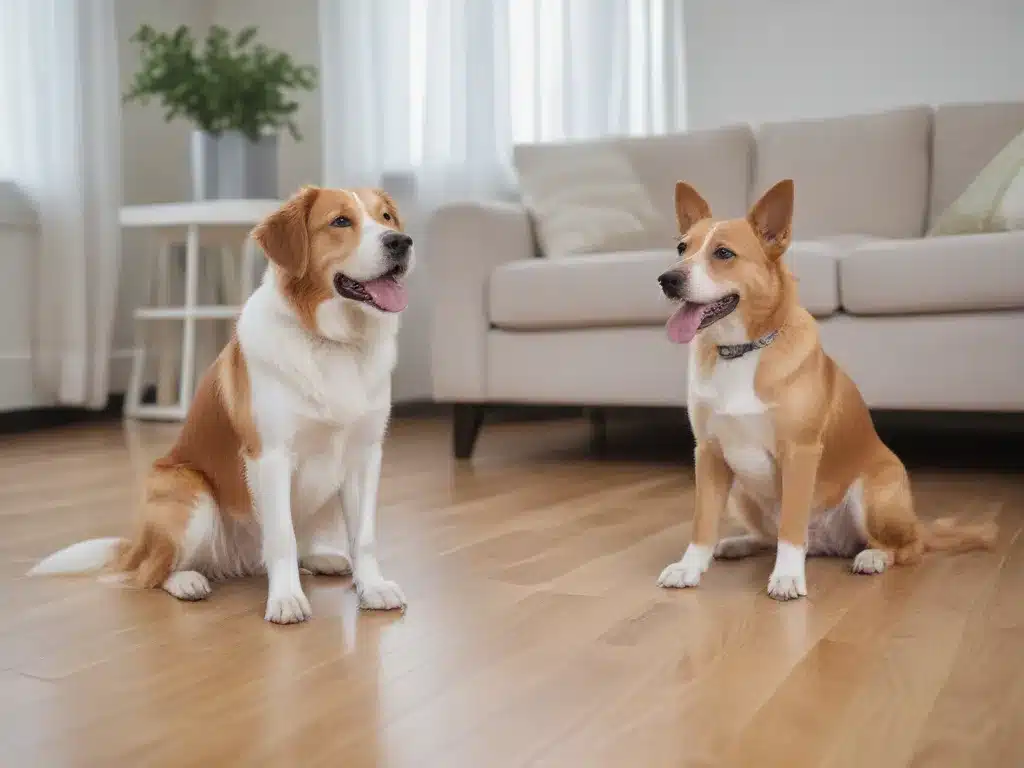Introduction
As a pet owner and the founder of AdamCleaning.uk, I understand the unique challenges that come with maintaining a clean and hygienic home environment while also ensuring the comfort and well-being of our furry friends. Pets bring immense joy and companionship into our lives, but they also contribute to the accumulation of pet dander, hair, and other messes that can be difficult to manage. This article aims to provide a comprehensive guide on deep cleanings for exceptionally pet-friendly homes, covering everything from specialized cleaning techniques to strategies for minimizing future messes.
The Importance of Regular Deep Cleanings
Regular deep cleanings are essential for maintaining a clean and healthy living environment, especially in homes with pets. Pets shed dander and hair, which can accumulate in carpets, upholstery, and other surfaces, potentially triggering allergies and respiratory issues. Additionally, pets may have accidents or track in dirt and debris from the outdoors, leading to unsightly stains and odors.
Deep cleanings go beyond surface-level cleaning and involve thorough cleaning of hard-to-reach areas, such as corners, crevices, and beneath furniture. This process helps to remove embedded dirt, dust, and pet hair, improving indoor air quality and creating a more hygienic environment for both humans and pets.
Preparing for a Deep Cleaning
Before embarking on a deep cleaning, it’s essential to take the necessary preparatory steps. These include:
- Decluttering: Remove any unnecessary items from the areas to be cleaned, allowing for easier access and a more thorough cleaning process.
- Protecting Surfaces: Cover or move furniture and delicate items to prevent accidental damage during the cleaning process.
- Gathering Supplies: Ensure you have the right cleaning products, tools, and equipment for the job. This may include specialized pet-safe cleaners, vacuum cleaners with HEPA filters, and protective gear such as gloves and masks.
- Scheduling: Choose a time when your pets can be safely secured or temporarily relocated to avoid disruptions and potential accidents during the cleaning process.
Deep Cleaning Techniques for Pet-Friendly Homes
Carpets and Upholstery
Carpets and upholstered furniture are notorious for harboring pet hair, dander, and odors. To effectively clean these surfaces, consider the following techniques:
- Vacuuming: Use a vacuum cleaner with a HEPA filter to capture even the smallest particles of pet hair and dander. Vacuum thoroughly, paying special attention to high-traffic areas and pet hangout spots.
- Steam Cleaning: Steam cleaning is an effective method for deep cleaning carpets and upholstery. The high-temperature steam helps to kill bacteria, viruses, and mites, while also loosening and extracting embedded dirt and pet hair.
- Enzymatic Cleaners: For tough pet stains and odors, consider using enzymatic cleaners specifically designed to break down and remove organic matter, such as urine and feces.
Hard Surfaces
Pet hair and dander can also accumulate on hard surfaces like floors, countertops, and walls. Follow these steps for an effective deep cleaning:
- Dusting and Sweeping: Start by dusting and sweeping all hard surfaces to remove loose dirt, hair, and debris.
- Mopping: Use a pet-safe floor cleaner and mop to thoroughly clean hard floors, paying special attention to corners and baseboards where pet hair can accumulate.
- Disinfecting: After cleaning, consider using a pet-safe disinfectant to eliminate any remaining germs or bacteria.
Air Quality
Improving indoor air quality is crucial in pet-friendly homes, as pet dander and odors can circulate through the air and potentially exacerbate allergies or respiratory issues. Consider the following strategies:
- Air Purifiers: Invest in high-quality air purifiers with HEPA filters to capture airborne pet dander, hair, and odors.
- Ventilation: Ensure proper ventilation by opening windows and running exhaust fans during and after cleaning to circulate fresh air and remove any lingering odors or particles.
- HVAC Maintenance: Regularly clean and maintain your heating, ventilation, and air conditioning (HVAC) system to prevent the buildup of pet hair and dander in the ducts and filters.
Minimizing Future Messes
While deep cleanings are essential, implementing strategies to minimize future messes can help reduce the frequency and intensity of cleaning required. Consider the following tips:
- Regular Grooming: Regularly brush and groom your pets to minimize shedding and reduce the amount of hair and dander in your home.
- Designated Pet Areas: Create designated pet areas or beds where your furry friends can relax and shed without spreading hair and dander throughout the entire home.
- Cleaning Routine: Establish a regular cleaning routine that includes daily spot cleaning, weekly vacuuming, and monthly deep cleaning to stay on top of pet-related messes.
- Pet-Friendly Flooring: Consider installing pet-friendly flooring options, such as hardwood or tile, which are easier to clean and less prone to trapping pet hair and odors compared to carpets.
Conclusion
Maintaining a clean and hygienic home environment while accommodating our beloved pets requires a combination of specialized cleaning techniques, careful preparation, and proactive strategies. By following the guidelines outlined in this article, you can ensure that your home remains exceptionally pet-friendly while also prioritizing cleanliness and air quality. Remember, regular deep cleanings and a commitment to minimizing future messes are key to creating a harmonious living space for both humans and pets alike.







